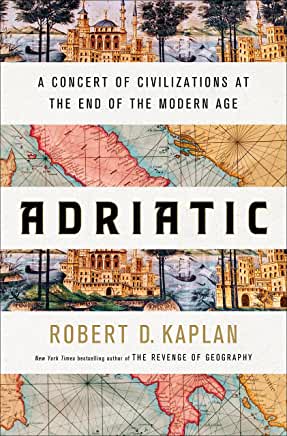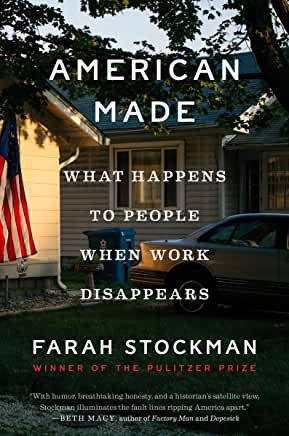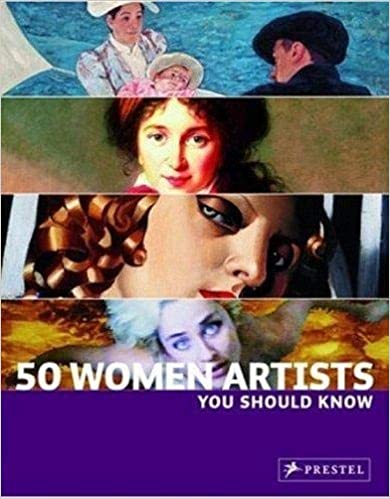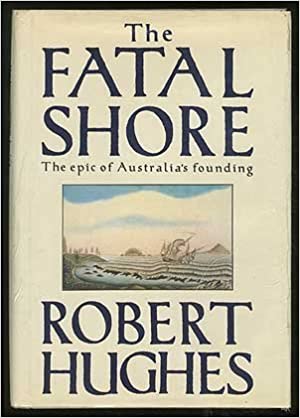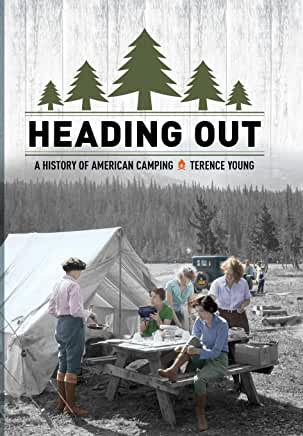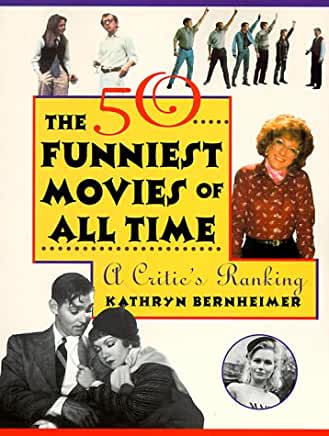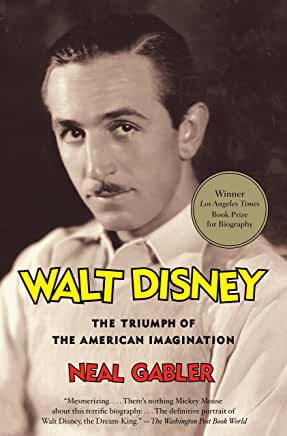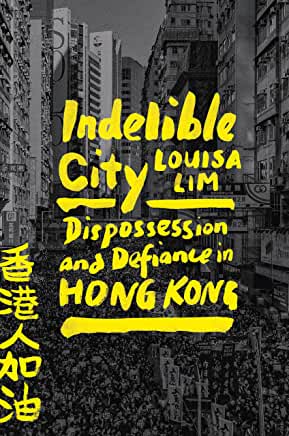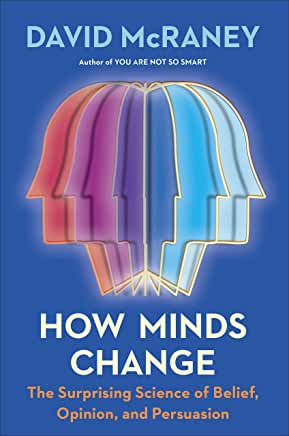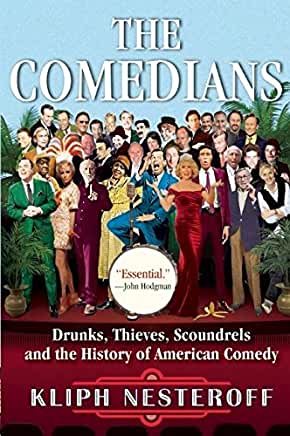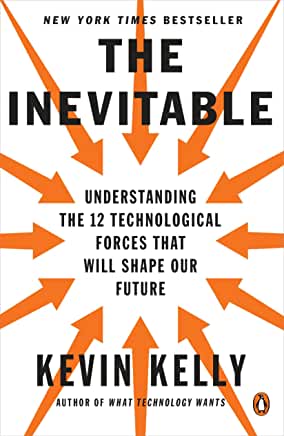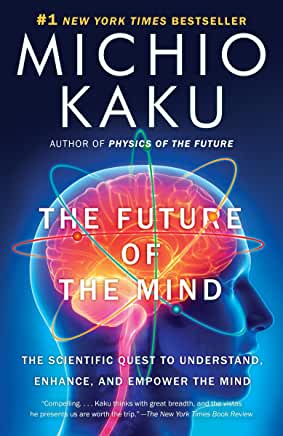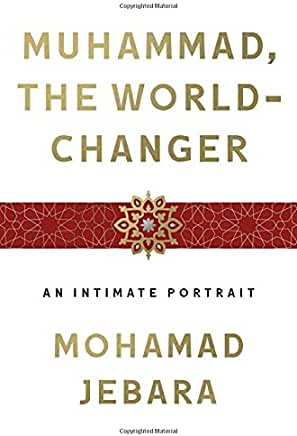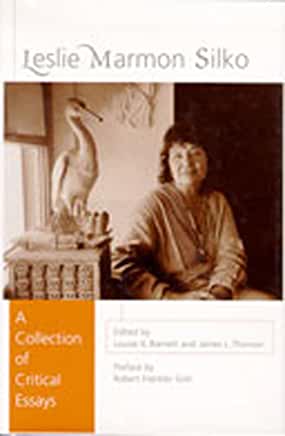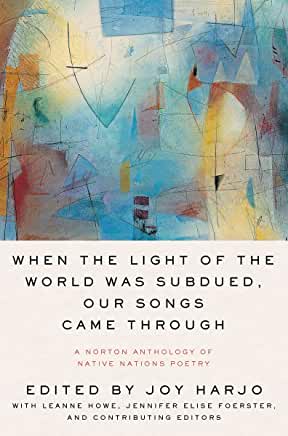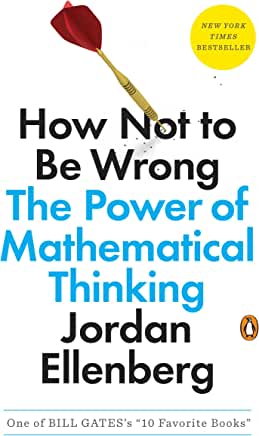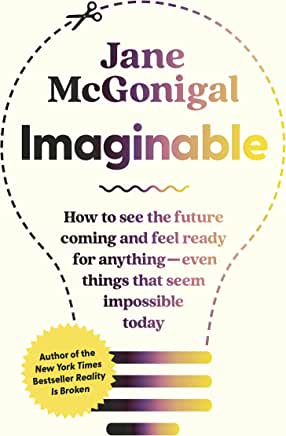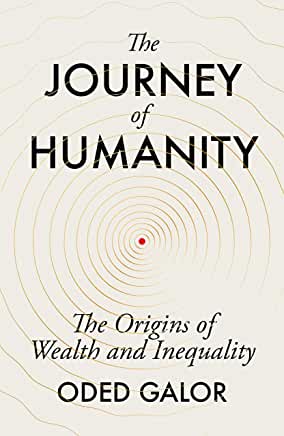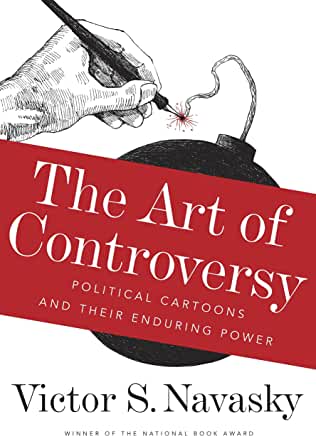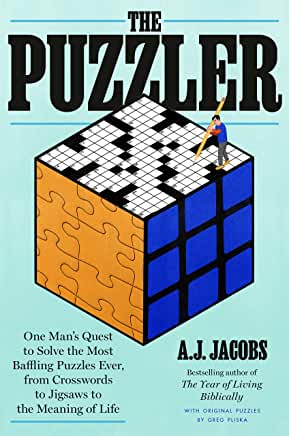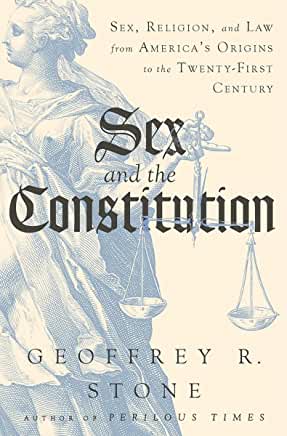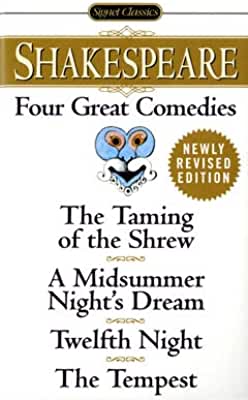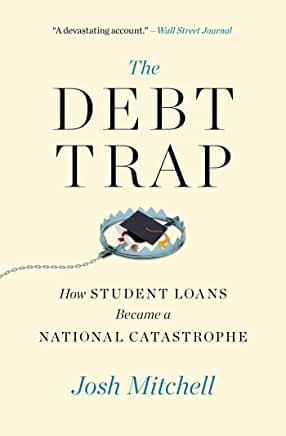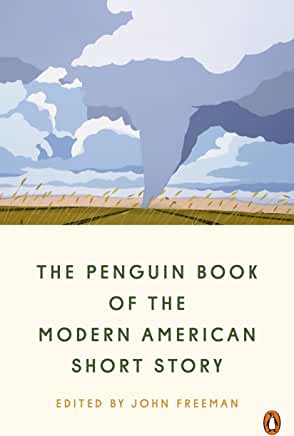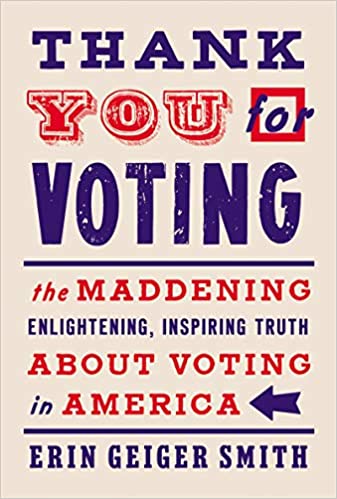CLICK HERE FOR PDF VERSION OF THESE COURSE DESCRIPTIONS (Best for Downloading or Printing)

COURSES
(SDGs) OFFERED
FOR WINTER/SPRING 2023
Classes start January 2nd and end April 28th.
|
1. (ADR) THE ADRIATIC |
|
|
|
|
In this insightful
travelogue, the author, a geopolitical expert and
bestselling author, turns his perceptive eye
to a region that for centuries has been a meeting
point of cultures, trade, and ideas. He undertakes a
journey around the Adriatic Sea, through Italy,
Slovenia, Croatia, Montenegro, Albania, and Greece,
to reveal that far more is happening in the region
than most news stories let on. Often overlooked, the
Adriatic is in fact at the center of the most
significant challenges of our time, including the
rise of populist politics, the refugee crisis, and
battles over the control of energy resources. And it
is once again becoming a global trading hub that
will determine Europe’s relationship with the rest
of the world as China and Russia compete for
dominance in its ports.
|
|
|
|
|
|
|
|
|
|
|
2. (AMM) AMERICAN MADE |
|
|
|
|
This report by Pulitzer Prize winning
journalist Farah Stockman on the closing of a ball bearing factory in Indiana
recounts, along with issues of labor and trade,
effects on the lives of three of the workers –
Wally Hall, John Feltner, and Shannon Mulcahy –
who lost their jobs. It shows what they lost with
the job and how they coped with the aftermath. It
highlights the cultural divide in this country
between high school and college-educated people,
especially isolation of the highly educated. It
describes the disruptions of family instability
and run-ins with the law. It stresses the
importance of work, even as manufacturing jobs
leave for low-wage places, or are automated away,
leaving mostly jobs in the service economy
available to laid-off workers. It illustrates the
shared, and differing, attitudes toward work and
work experiences of men and women, whites and
blacks, as well as their political attitudes. The many topics
covered in the book, including unions, chasing
low-wage labor, work skills, automation,
unemployment, UBI (Universal Basic Income), work
guarantees, class division based on education, race
and sex discrimination, family stability, the
justice system, can be used for presentations. |
|
|
|
|
|
|
|
|
|
|
3. (ART) 50 WOMEN ARTISTS YOU SHOULD KNOW |
|
|
|
|
Why does it seem that history
has ignored so many women artists? This S/DG will
focus on 50 women artists many of whom are
unfamiliar. The common reading includes artists from
early Baroque painter Artemisia Gentileschi to
Impressionist Mary Cassatt, to modern icons such as
Frida Kahlo, Georgia O’Keeffe and Louise Bourgeois. Possible topics:
|
|
|
|
|
|
|
|
|
|
4. (AUS) FOUNDING OF AUSTRALIA |
|
|
|
|
Problems with prison systems,
providing for the poor, and dealing with the
homeless are not new problems. Eighteenth
century England’s solution was to transport 160,000
men and women thousands of miles to the other side
of world and out of sight. This S/DG will dig into the
dark history of the founding and settling of
Australia. The
recommended book as a basis for class discussion is
The Fatal Shore: The Epic of Australia’s Founding
by Robert Hughes.
By tracing the European presence in Australia
from early explorations through the rise and fall of
the penal colonies, the S/DG will learn about the
crisis in crime and punishment in Georgian Great
Britain and how Captain Cook’s initial discovery of
the east coast of Australia influenced the solution. Possible presentations for this
S/DG would be to investigate additional information
on how England’s settlement of the U.S. compared to
its development of Australia; how have both
countries dealt with their indigenous population;
how have prison systems and punishment methods
evolved; comparison to current immigration issues
and popular beliefs about the immigrants; and how do
we reconcile this act of transporting people out of
view in today’s society. |
|
|
|
|
|
|
|
|
|
|
INSUFFICIENT
MEMBER INTEREST – WILL BE DROPPED: 5. (CAM) A HISTORY OF CAMPING IN AMERICA |
|
|
|
Common Reading: Heading Out: A
History of American Camping, by Terence Young
(June 2017) |
Camping is one of our
most popular pastimes ― tens of millions of
Americans go camping every year! Whether on foot,
on horseback or in RVs, campers have been enjoying
themselves for well more than a century, during
which time camping’s appeal has shifted and
evolved. By way of our
recommended text, we’ll head out into nature and
explore the history of camping in the United
States. While camping began as an impulse among
city-dwellers to seek temporary retreat from their
exhausting everyday surroundings, it soon became a
form of recreation so popular that an industry
grew up around it to provide an endless supply of
ever-lighter and more convenient gear. Let’s
gather ‘round the (virtual) campfire to swap a few
campground tales of our own. Possible presentations could
include:
|
|
|
|
|
|
|
6. (COM) COMEDY MOVIES |
|
|
|
Potential
Text: The
50 Funniest Movies of All Time: A Critic’s
Ranking, by
Kathryn Bernheimer (June 2000) |
From Buster Keaton
to Diane Keaton, from Monty Python to The Full
Monty, from Animal Crackers to Animal House, from
Billy Wilder to Gene Wilder, we will cover the full
range of film comedy. Each member of the S/DG will
choose a movie to share, give a presentation on the
film, and provide discussion questions. Other
Sources: Top 100
comedies on Rotten Tomatoes, or IMDb, or AFI, or any
other potential website. |
|
|
|
|
|
|
INSUFFICIENT
MEMBER INTEREST – WILL BE DROPPED: 7. (DIS) WALT DISNEY |
|
|
|
Common Reading: Walt Disney: The Triumph of the
American Imagination by Neal Gabler
(October 2007, paperback; 912 pages) |
Walt Disney was a visionary
and perfectionist who transformed cartoons into an
art form and then revolutionized the entertainment
industry by building an empire that combined film,
television, music, book publishing, and theme
parks. Our text for this S/DG is the biography Walt
Disney: The Triumph of the American Imagination
which paints Disney as a restless artist who had
some very ambitious plans to experiment with
utopian ideas as he envisioned his Experimental
Prototype Community of Tomorrow. Unfortunately,
Disney’s dreams for EPCOT were diluted after his
untimely death in 1966. Possible presentation topics include:
any of the classic animated features from Snow White to Frozen; the many
innovations that the Walt Disney Studios
developed; any of the favorite Disney TV programs
from way back; a comparison of Disney’s vision for
EPCOT versus what was eventually built at Walt
Disney World in Florida; or a study of why some
people are driven to always try something new
rather than repeat the formula for their past
successes. |
|
|
|
|
|
|
|
|
|
|
8. (ECN) THIS WEEK IN THE ECONOMIST
|
|
|
|
|
The British weekly publication
The Economist is known for its informative
and thought-provoking reporting on political and
economic developments around the world. In this
S/DG, we will discuss several articles selected from
the current issue as catalysts for informed and
lively discussion on the burning topics of our time.
Leadership will rotate and all articles selected are
easily accessed online. Given the many worldwide
problems this course will help to give you a deeper
look than just a brief sound bite from somebody
reading off a teleprompter. |
|
|
|
|
|
|
|
|
|
|
INSUFFICIENT
MEMBER INTEREST – WILL BE DROPPED: 9. (HKG) INDELIBLE CITY: DISPOSSESSION AND DEFIANCE IN HONG KONG |
|
|
|
Common
Reading: Indelible
nce
in Hong Kong
by Louisa
Lim (April 2022) |
The story of Hong Kong has long been dominated by competing myths: to Britain, a “barren rock” with no appreciable history; to China, a part of Chinese soil from time immemorial, at last returned to the ancestral fold. For decades, Hong Kong’s history was simply not taught, especially to Hong Kongers, obscuring its origins as a place of refuge and rebellion. When protests erupted in 2019 and were met with escalating suppression from Beijing, Louisa Lim—raised in Hong Kong as a half-Chinese, half-English child, and now a reporter who has covered the region for nearly two decades—realized that she was uniquely positioned to unearth the city’s untold stories. Lim’s deeply researched
and personal account casts startling new light on
key moments: the British takeover in 1842, the
negotiations over the 1997 return to China, and
the future Beijing seeks to impose. Indelible
City features guerrilla calligraphers,
amateur historians and archaeologists, and others
who aim to put Hong Kongers
at the center of their own story. Wending through
it all is the King of Kowloon, whose iconic street
art both embodied and inspired the identity of
Hong Kong—a site of disappearance and
reappearance, power and powerlessness, loss and
reclamation. Presentation topics:
|
|
|
|
|
|
|
|
|
|
|
10. (HMC) HOW MINDS CHANGE |
|
|
|
|
What
made a prominent conspiracy-theorist YouTuber
finally see that 9/11 was not a hoax? How do voter
opinions shift from neutral to resolute? Can
widespread social change only take place when a
generation dies out? Our common reading is a book
about the science, and the experience, of
transformation. When self-delusion expert and psychology nerd David McRaney began a book about how to change someone’s mind in one conversation, he never expected to change his own. But then a diehard 9/11 Truther’s conversion blew up his theories - inspiring him to ask not just how to persuade, but why we believe, from the eye of the beholder. Delving into the latest research of psychologists and neuroscientists, our common reading explores the limits of reasoning, the power of groupthink, and the effects of deep canvassing. Told with McRaney’s trademark sense of humor, compassion, and scientific curiosity, it’s an eye-opening journey among cult members, conspiracy theorists, and political activists, from Westboro Baptist Church picketers to LGBTQ campaigners in California - that ultimately challenges us to question our own motives and beliefs. In an age of dangerous conspiratorial thinking, can we rise to the occasion with empathy? Possible
presentations can explore the secrets of successful
con men, the power of cults, and what makes some
people more resistant to change. |
|
|
|
|
|
|
|
|
|
|
11. (HOC) HISTORY OF COMEDY |
|
|
|
|
In this S/DG we
will discuss the history of 100 years of American
comedy, studying real-life characters, forgotten
stars, mainstream heroes and counterculture
iconoclasts. We will discuss the way comedians
have reflected, shaped, and changed American
culture. Starting with the vaudeville circuit at
the turn of the last century, continuing with
Mafia-run supper clubs that replaced speakeasies
after Prohibition ended and replaced vaudeville
impresarios as the comedian's primary employer. In
the 1950s, the late-night talk show brought
stand-up to a wide public, while Lenny Bruce, Mort
Sahl,
and Jonathan Winters attacked conformity and
staged a comedy rebellion in coffeehouses.
Presentation topics could include comedy's part in
the Civil Rights movement and the social upheaval
of the late 1960s, the first comedy clubs of the
1970s, the cocaine-fueled comedy boom of the
1980s, or the new era of media-driven celebrity in
the twenty-first century, as well as any comedian
of your choosing. |
|
|
|
|
|
|
|
|
|
|
12. (INE) THE INEVITABLE |
|
|
|
|
Much of what will
happen in the next thirty years is inevitable,
driven by technological trends already in motion.
Kevin Kelly provides an optimistic road map for the
future, showing how the coming changes in our
lives—from virtual reality in the home to an
on-demand economy to artificial intelligence
embedded in everything we manufacture—can be
understood as the result of a few long-term,
accelerating forces. Kelly both describes these deep
trends—interacting, cognifying,
flowing, screening, accessing, sharing, filtering,
remixing, tracking, and questioning—and demonstrates
how they overlap. These larger forces will
completely revolutionize the way we buy, work,
learn, and communicate with each other. Possible presentations: How the
scientific method has evolved and continues to do
so; how the breakthrough of the world wide web is
more about what people do with it; how The Whole
Earth Catalog continues to be a thing. |
|
|
|
|
|
|
|
|
|
|
13. (MND) THE FUTURE OF THE MIND |
|
|
|
|
This course will focus on the
scientific quest to understand, enhance and empower
the mind. The
secrets of the living brain are now being revealed,
thanks to computers and a battery of high brain
scans. In
the last couple of decades what was once solely the
province of science fiction has become a startling
reality. Technologies
considered impossible, such as recording memories,
communicating telepathically, videotaping our
dreams, and performing telekinesis, have now been
demonstrated in the laboratory. The Future of the Mind provides an authoritative
compelling look at the research being done around
the world – all based on the latest advancements in
neuroscience and physics. Perhaps
one day we will have a ‘smart pill’ that can enhance
our cognition; be able to upload our brains to a
computer, neuron for neuron; send thoughts and
emotions on a ‘brain net’; and control computers and
robots with our minds. Dr. Michio Kaku takes us on a
grand tour of what the future might hold from a
physicist’s perspective. He
provides a solid sense of how
the brain functions and explains how
groundbreaking technologies will change our daily
lives. Hey
new theory of ‘consciousness’ and applies it to
provide fresh insight into mental illness,
artificial intelligence and alien consciousness. Dr. Kaku shares a deep
understanding of modern science with a keen
perception for future developments. The
Future of the Mind is an extraordinary
exploration of the frontiers of neuroscience. The
Future of the Mind was a #1 New York Times
Bestseller written for a layman who wants to have a
better understanding of the scientific exploration
of the human mind. Possible presentation topics
include memories, enhancing our intelligence,
dreams, and the artificial mind – robots. |
|
|
|
|
|
|
|
|
|
|
INSUFFICIENT
MEMBER INTEREST – WILL BE DROPPED: 14. (MUH) MUHAMMAD: THE WORLD-CHANGER |
|
|
|
|
A
six-year-old cries in his mother’s arms as she
draws her last breaths to urge him: “Muhammad, be
a world-changer!” The boy, suddenly orphaned in a
tribal society that fears any change, must
overcome enormous obstacles to unleash his own
potential and inspire others to do the same. Muhammad
emerges as an unrelenting man on a mission. Jewish
and Christian mentors inspire him; and the
enslaved individuals he helps liberate, propel his
movement. This book is
very simplified and modernized. Jebara has a very
storytelling manner, and it keeps you captivated.
The author made trips to the same places where
facts from this book took place centuries ago. I
recommend this book to anyone who not only wants
to learn about Muhammad, but for anyone looking
to grab a good captivating book to enjoy! “If you’re looking for a
depiction of Muhammad receiving visitations from
angels or having direct talks with the Divine
Master, you’re going to walk away from this text
very disappointed. Instead, Muhammad, the
World-Changer reads kind of like a
Muslim version of How to Win Friends and
Influence People.” --Zachary
Houle A Library Journal
commentator said that Jebara
had to fuse together contradictory accounts, and
so “got things wrong.” What is the consensus on
social media or even from a practicing Muslim, if
they believe he did? Possible topics:
|
|
|
|
|
|
|
|
|
|
|
15. (NAL) NATIVE AMERICAN LITERATURE |
|
|
|
Common Readings: TBD |
Over the last few trimesters,
an S/DG has been offered in the style of a Literary
Salon by focusing on a selection of the works of one
author. For
this trimester, the Literary Salon will sample works
from various writers associated with Contemporary
Native American Literature instead of just one
author’s body of work.
By comparing writings (both
fiction and non-fiction) from a sample of authors
from different tribal nations, the members will be
asked to consider these readings in their social,
historical, and cultural contexts. Themes that can
be explored in the works and topics for
presentations may include:
The selection of authors and
works will include novels, short stories, essays,
and poetry. Sample
potential offerings are listed below. These and
others will be discussed and selected at the
pre-meeting. Possible Novels: Louise Erdrich, The
Roundhouse; Leslie Marmon Silko, Ceremony;
N. Scott Momaday, House Made of Dawn; Tommy
Orange, There, There; Cherie Dimaline,
the Marrow Thieves Possible Poetry: When the Light of the
World was Subdued, Our Songs Came Through, A Norton Anthology,
Edited by Joy Harjo Possible Essays: Here
First: Autobiographical Essays by Native American
Authors, Arnold
Krupat and Brian Swann,
Editors |
|
|
|
|
|
|
|
|
|
16. (NBW) HOW NOT TO BE WRONG |
|
|
|
|
Most people’s view of math is
very wrong. This may be because many of us were
taught by people who didn’t like math and weren’t
very good at it. Paraphrasing one reviewer of our
Common Reading; “With math as with anything else,
there’s smart, and then there’s street smart. This
book will help you be both. Fans of Freakonomics
and The Signal
and the Noise will love Ellenberg’s surprising
stories, snappy writing, and brilliant lessons in
numerical savvy. How Not to
Be Wrong is sharp, funny,
and right.” We recently had an S/DG based on a book
by Ellenberg and it was
sharp, funny, and right. He is a mathematician with
a sense of humor and how to have fun. Math is not
drudgery; it is a way of thinking that leads to
living better in an increasingly complicated world.
Possible topics for research
and presentation might include: pros and cons of
various voting systems; how to react to a pandemic,
how we might react to aging, etc. |
|
|
|
|
|
|
|
|
|
|
INSUFFICIENT
MEMBER INTEREST – WILL BE DROPPED: 17. (OPT) IMAGINABLE, AN OPTIMISTIC LOOK FORWARD |
|
|
|
|
Many of us were
surprised by some of the events of the last few
years, but the Institute of the Future predicted a
lot of them, including the pandemic, the war in
Ukraine, and the intensity of wildfires. Jane
McGonigal, the author of our common reading, is a
future forecaster and game designer who teaches us
to envision the future before it arrives - and
then gives us the tools to help shape the world we
want to live in.
She wants us to train our minds to look
into the future and make these predictions
ourselves; she feels we will be more able to
handle events if the mind has already experienced
them virtually. In Imaginable, Jane McGonigal draws on the
latest scientific research in psychology and
neuroscience to show us how to train our minds to
think the unthinkable and imagine the
unimaginable. She invites us to play with the
provocative thought experiments and future
simulations she’s
designed exclusively for this book, with the goal
to:
Imaginable teaches us to be
fearless, resilient, and bold in realizing a world
with possibilities we cannot yet imagine. The book
is filled with games, scenarios and simulations to
assist us, through preparation, in creating a less
stressful future. Presentations could include
expanding on one of the scenarios presented in the
book, or on creating your own. One could also
imagine their own ten-year plan, as described
above. |
|
|
|
|
|
|
|
|
|
|
INSUFFICIENT
MEMBER INTEREST – WILL BE DROPPED: 18. (OWI) THE ORIGINS OF WEALTH AND INEQUALITY |
|
|
|
|
In a captivating journey from
the dawn of human existence to the present,
world-renowned economist and thinker Oded Galor offers an intriguing
solution to two of humanity’s great mysteries. Why are humans the only
species to have escaped - only very recently - the
subsistence trap, allowing us to enjoy a standard
of living that vastly exceeds all others? And why
have we progressed so unequally around the world,
resulting in the great disparities between nations
that exist today? Immense in scope and packed with
astounding connections, Galor's
gripping narrative explains how technology,
population size, and adaptation led to a stunning
“phase change” in the human story a mere two
hundred years ago. But by tracing that same
journey back in time and peeling away the layers
of influence - colonialism, political
institutions, societal structure, culture - he
arrives also at an explanation of inequality's
ultimate causes: those ancestral populations that
enjoyed fruitful geographical characteristics and
rich diversity were set on the path to prosperity,
while those that lacked it were disadvantaged in
ways still echoed today. As we face ecological crisis
across the globe, The Journey of Humanity
is a book of urgent truths and enduring relevance,
with lessons that are both hopeful and profound:
gender equality, investment in education, and
balancing diversity with social cohesion are the
keys not only to our species’ thriving, but to its
survival. There are many topics for
presentations; some of them might be: a detailed
look at Korea and how its halves differ, pick a
country and consider how his thesis holds up or
fails in the country selected, compare the U.S.
and India, the impact of immigration on a modern
economy, etc. |
|
|
|
|
|
|
|
|
|
|
19. (POL) POLITICAL CARTOONS THROUGHOUT HISTORY |
|
|
|
|
This S/DG will discuss the history of political cartoons and their awesome power to enrage, provoke, and amuse. And their artists’ encounters with censorship, threats, incarceration, and even murder for their art. And how these cartoons captured the zeitgeist throughout history and shaped it as well. And the true power of one of our most enduringly vital forms of artistic expression. Potential topics
include: the lives of various cartoonists such as
George Grosz, David Levine, Herblock, Honore Daumier, Ralph
Steadman, etc., artists such as Picasso,
Goya, etc., as
well as political
cartoons throughout history and around the world. |
|
|
|
|
|
|
|
|
|
|
INSUFFICIENT
MEMBER INTEREST – WILL BE DROPPED: 20. (PUZ) PUZZLES |
|
|
|
|
Is part of your morning
routine doing The New York Times crossword
puzzle or the daily Wordle? Is there
a partially completed jigsaw puzzle on your dining
room table? Have
you solved the Rubik’s Cube? If so, this S/DG is
for you. What makes puzzles - jigsaws, mazes,
riddles, sudokus - so satisfying? Be it the
formation of new cerebral pathways, their close
link to insight and humor, or their
community-building properties, they’re among the
fundamental elements that make us human. Convinced
that puzzles have made him a better person, the
author of our common reading, A.J. Jacobs, set out
to determine their myriad benefits. And maybe, in
the process, solve the puzzle of our very
existence. Well, almost. In our common
reading, Jacobs meets the most zealous
devotees, enters (sometimes with his family in
tow) any puzzle competition that will have him,
unpacks the history of the most popular puzzles,
and aims to solve the most impossible
head-scratchers, from a mutant Rubik’s Cube, to
the hardest corn maze in America, to the most
sadistic jigsaw. Chock-full of unforgettable
adventures and original examples from around the
world - including new work by Greg Pliska, one of America’s
top puzzle-makers, and a hidden, super-challenging
but solvable puzzle that will earn the first
reader to crack it a $10,000 prize - The Puzzler
will open readers’ eyes to the power of flexible
thinking and concentration. Whether you’re puzzle
obsessed or puzzle hesitant, you’ll walk away with
real problem-solving strategies and pathways
toward becoming a better thinker and decision
maker—for these are certainly puzzling times. Class members can choose to present on
their favorite puzzle type – its history, how it
works, what’s so special about it – or about the
role of games in our culture, or anything else
having to do with puzzles. |
|
|
|
|
|
|
|
|
|
|
INSUFFICIENT
MEMBER INTEREST – WILL BE DROPPED: 21. (SAC) SEX AND THE CONSTITUTION |
|
|
|
|
Especially given the
Supreme Court cases which are already in the
pipeline for decision, there can be no doubt when
this course is held one of the main issues in our
society will be the role of the Constitution in
defining the rights of our citizens, and
especially, our women, in the areas of sexuality
and abortion. Knowing that the media
cannot truly illuminate these issues fully, we
will take advantage of the existence of our common
book, Sex and the Constitution: Sex, Religion,
and Law from America's Origins to the
Twenty-First Century, written by University
of Chicago Law School Professor Geoffrey Stone. Amazon describes
Professor Stone’s book as follows: “Renowned constitutional
scholar Geoffrey R. Stone traces the evolution of
legal and moral codes that have attempted to
legislate sexual behavior from the ancient world
to America's earliest days to today's fractious
political climate. Stone crafts a remarkable, even
thrilling narrative in which he shows how
agitators, moralists, legislators, and especially
the justices of the Supreme Court have
historically navigated issues as explosive and
divisive as abortion, homosexuality, pornography,
and contraception.” Possible topics for
presentation include: A more in depth, or an
alternative, exploration of any of the topics
and/or cases discussed by Stone; alternative
approaches to any of the conclusions reached
and/or positions taken by Stone; and any court
cases which have been recently taken up or decided
by the Supreme Court since Stone published his
book in 2017.
Also, it is suggested
that the course focus only on the roughly 400
pages which cover the American historical period,
while encouraging students who wish to do so to
delve into the earlier historical times; perhaps
one or more students would use their presentation
to summarize one or more of those sections for the
benefit of the class. |
|
|
|
|
|
|
|
|
|
|
22. (SHK) SHAKESPEARE: ALL THE WORLD’S A STAGE |
|
|
|
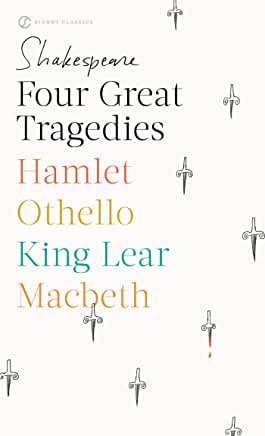
Reading: TBD (Selected Plays) |
The Omnilorean
New Globe Theater plans a new season of study,
continuing our usual pattern of reading one each of
the Bard’s Histories, Comedies, and Tragedies – the three plays to be chosen
during our upcoming pre-meeting. With
players standing and with a few props, we propose
to do reading walk-throughs of the plays, plus
short presentations on and discussion of each
play. In this S/DG you
will learn how to research all perspectives of
Shakespeare’s works — sources of each play upon which
the Bard builds rich characters and enhances the
plots, how to play each character “in character,”
themes, symbols, images, motifs, commentary on
issues of the day, and all manner of rhyme and
reason. Class members each serve on
one play’s Board of Directors, responsible
for casting roles for the repertory, short
presentations, and leading discussions based on the
research — optionally
adding videos, music, and costumes. For a
glimpse of how we live the Bard in this S/DG, check
out https://omnilore.org/members/Curriculum/SDGArchive/16a-SHK-Shakespeare
to view a typical past Shakespeare class’s website
of links to references relevant to our plays and
downloadable organizing artifacts. There are no
prerequisites, theatrical or otherwise. You will
find that the Bard of Stratford-on-Avon will teach
us, just as he’s taught others for four hundred
years. With plenty for the novice as
well as the veteran, it is a foregone
conclusion members will leave this class with
a fuller understanding of the masterful story
construction, realistic characters with depth and
humanity, and the rich, evocative language which
have earned William Shakespeare the title of
greatest writer in the English language. |
|
|
|
|
|
|
|
|
|
|
INSUFFICIENT
MEMBER INTEREST – WILL BE DROPPED: 23. (SLT) THE STUDENT LOAN TRAP |
|
|
|
|
Far from making college
affordable, the student loan system has created a
college-industrial complex that has submerged
multiple generations in debt. For millions, their
college investment turned into a nightmare: 43
million people owe a combined $1.6 trillion in
student debt, more than both credit card debt and
car loans. This program began in the 1950s,
evolved into a grand social experiment in the
1960s, got overtaken by greedy colleges in the
1980s and 1990s ending with Sallie Mae turning
student lending into a big business. College cost
was further exacerbated by politicians’ best
intentions which worsened the problem. When Alice
Rivlin (student loan program framework developer)
was asked in 2019 how the system turned out she
didn’t hesitate: “We unleashed a monster”. This
S/DG will discuss this debt nightmare and other
problems with higher education. Possible S/DG topics include need for
college, new financing concepts, virtual college,
vocational schools and other topics concerned with
higher education. |
|
|
|
|
|
|
24.
& 25.
(SSC
& SSZ) THE MODERN AMERICAN SHORT STORY |
||
|
|
||
|
Note: This
trimester, we will be offering two distinct
sections of our short stories offering, each with
a different 3 letter identifier.
Both
S/DGs will be subject to the normal scheduling
restrictions on Omnilore classes; that is, they
must have at least 10 people available at the same
time and will be split if more than 19 members
sign up. You
may request SSC
and/or SSZ
on your request form. If you
are willing to attend in either format, list your
preferred format first and your secondary
preference as a backup. In the
past fifty years, the American short story has
changed dramatically. New voices, forms, and
mixtures of styles have brought this unique genre a
thrilling burst of energy. Our common reading, The Penguin Book of the
Modern American Short Story,
celebrates this avalanche of talent. It
contains a selection of
the best and most representative contemporary
American short fiction from 1970 to 2020,
including such authors as Ursula K. LeGuin, Toni Cade Bambara,
Jhumpa Lahiri, Sandra
Cisneros, and Ted Chiang, hand-selected by
celebrated editor and anthologist John Freeman. S/DG members will each select
one or two short stories to present to the class. Presentations
may include background on the author and the history
of the story, followed by a list of discussion
questions. |
|
|
|
|
|
|
|
|
|
|
|
INSUFFICIENT
MEMBER INTEREST – WILL BE DROPPED: 26. (VOT) THANK YOU FOR VOTING |
|
|
|
|
Voting is a prized American
right and a topic of debate from the earliest days
of the country. Yet in the 2016 presidential
election, about 40 percent of Americans―and half
of the country’s young adults―didn’t vote. Why do
so many Americans choose not to vote, and what can
we do about it? Our proposed text contends
that the problem is a lack of understanding about
our electoral system and a need to make voting
more accessible. Thank You for Voting is
an eye-opening look at the voting process,
starting with the Framers’ perspective, through
the Equal Protection amendment and the Voting
Rights Act, to the present and simple actions
individuals can take to increase civic
participation in local, state, and national
elections. This S/DG will expand our
knowledge about our democracy―including women’s
long fight to win the vote, attempts to suppress
newly enfranchised voters' impact, state
prohibitions against felons voting, charges of
voter fraud and voter suppression, and other vital
issues. The book explains, in a conversational
tone, topics that can confuse even the most
informed voters: polling, news literacy,
gerrymandering and the Electoral College. We’ll
also explore how age, race, and socioeconomic
factors influence turnout. Ultimately, our author offers
hope, and no doubt we could all use some of that
these days! Presentation topics:
|
|
|
|
|
|
| This webpage Last Updated:
Oct. 30, 2022 (hh) Website Suggestions to: Webmaster@Omnilore.org |
